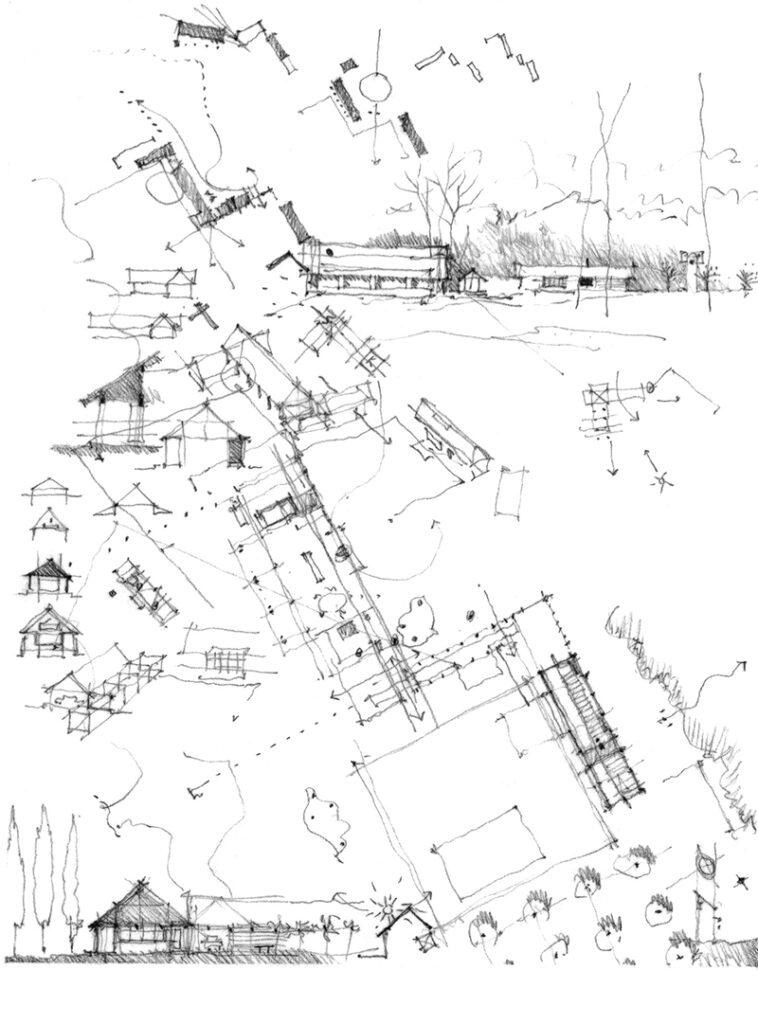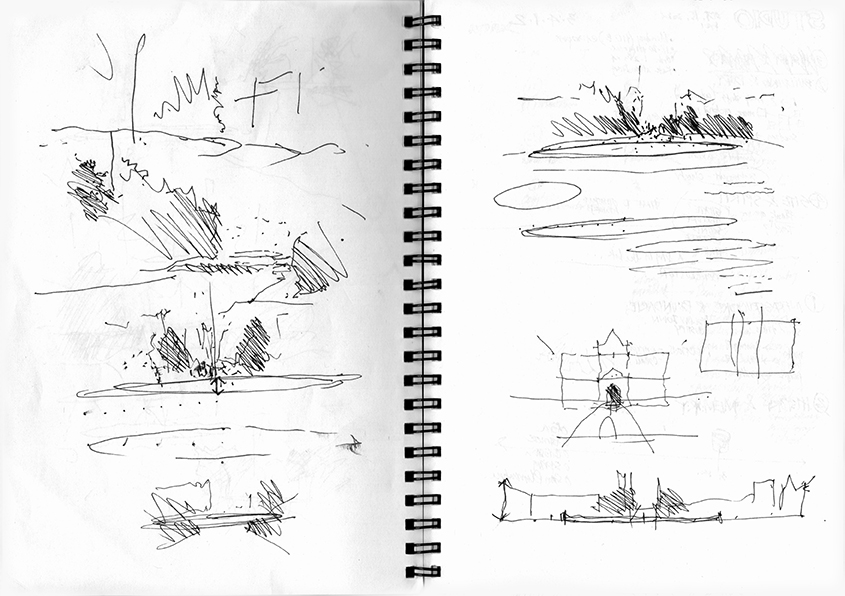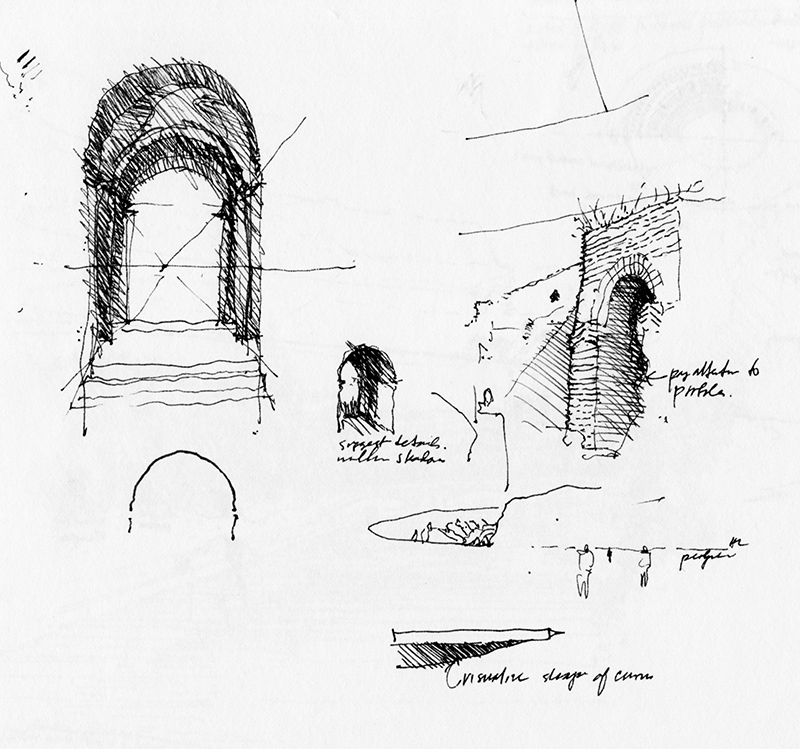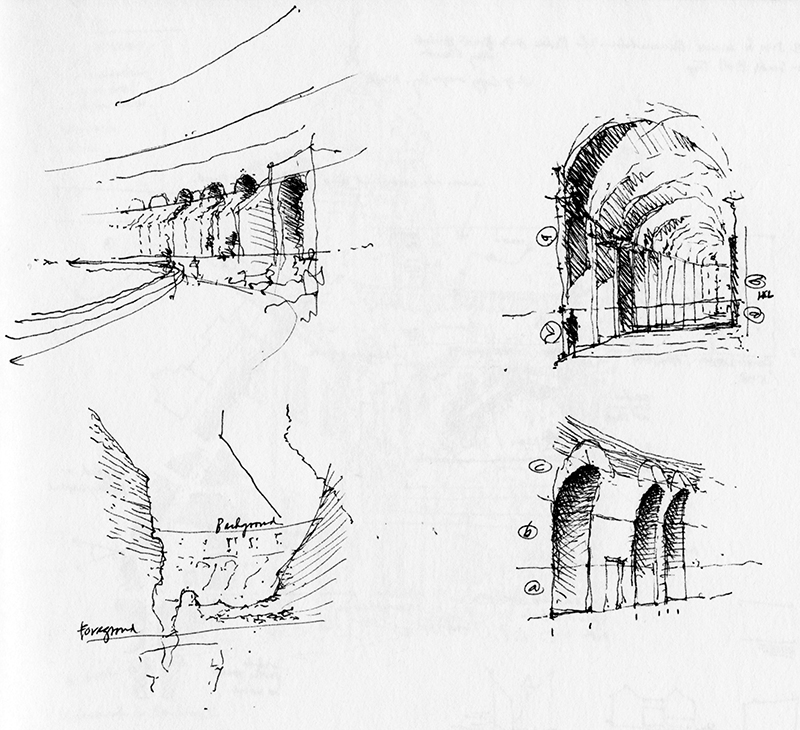
At times, we simply do not have the time to stop and sketch for more than a few minutes. Yet, we still want to capture the moment of being in a specific place at a certain time. While graphic studies done under these circumstances may not fully describe a visual scene, they serve as a reminder of where we have been and what we experienced.
These are examples sketched extremely quickly while visiting Tuskegee University Chapel, designed by Paul Rudolph of New York and the African-American firm of John A. Welch and Louis Fry, both former Tuskegee Institute Faculty members.

























